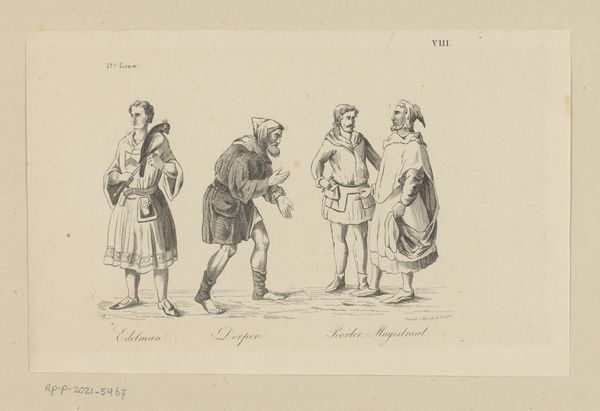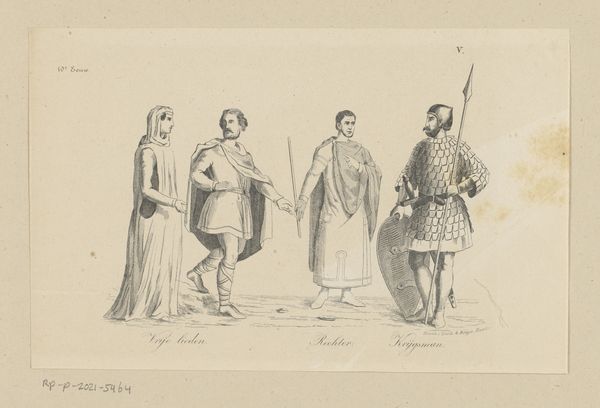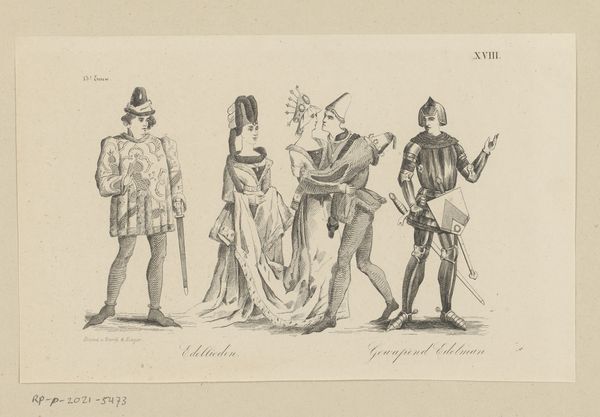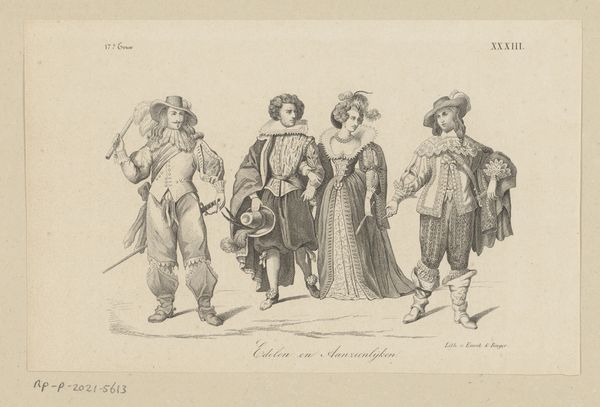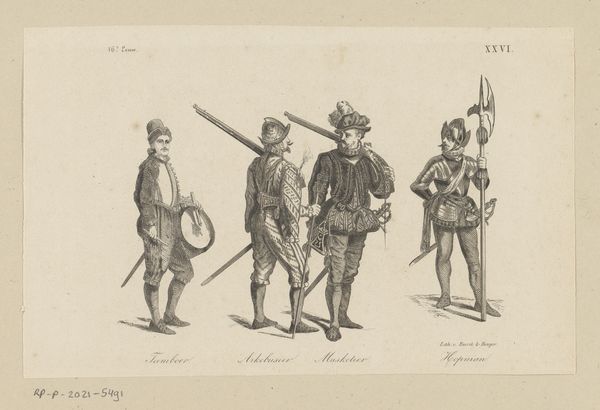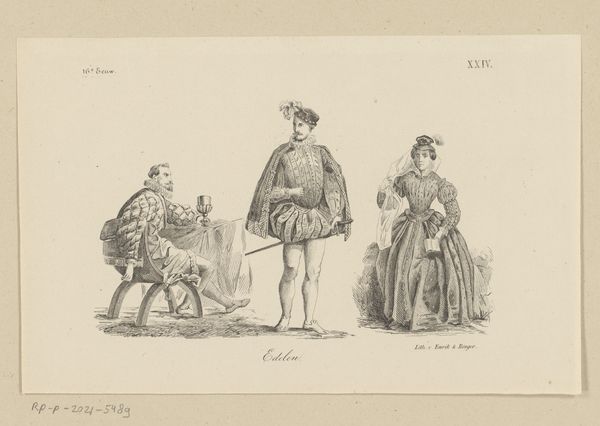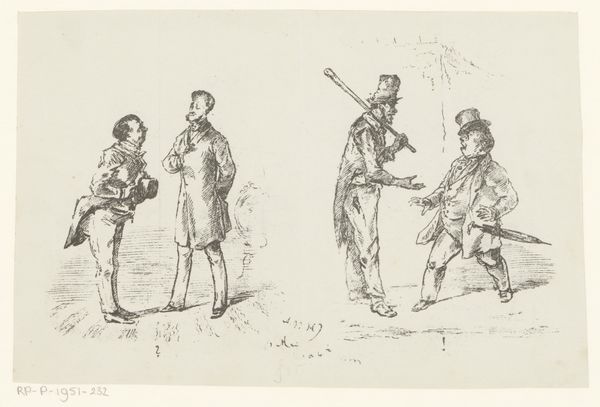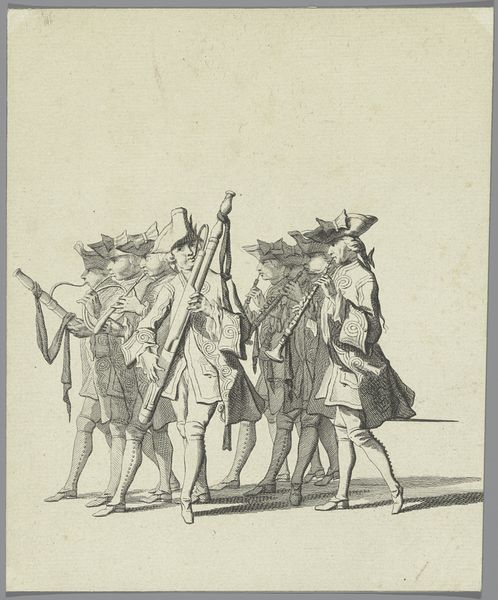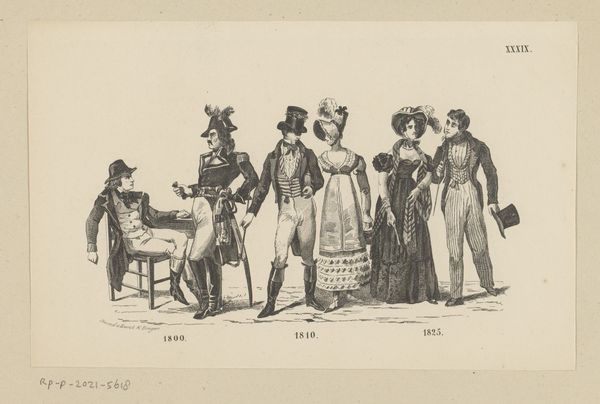
Plattelandsbewoner, poorters en gewapend poorter in kleding uit de vijftiende eeuw 1857
0:00
0:00
print, engraving
#
portrait
#
medieval
# print
#
figuration
#
group-portraits
#
costume
#
line
#
sketchbook drawing
#
genre-painting
#
history-painting
#
academic-art
#
engraving
#
realism
Dimensions: height 149 mm, width 232 mm
Copyright: Rijks Museum: Open Domain
Curator: This print from 1857, "Plattelandsbewoner, poorters en gewapend poorter in kleding uit de vijftiende eeuw," depicts figures dressed in fifteenth-century garb. Editor: There’s an austere, almost documentary quality here, despite the clear romanticizing gaze. Curator: It's interesting to see the detailed rendering achieved through engraving; look at the way line is used to create depth and texture in the clothing. One can clearly discern the social hierarchy through their material possessions, or lack thereof. Note the roughspun clothes of the rural worker compared with the burghers' fine fabric. Editor: Exactly. It really drives home the visual distinctions maintained through dress, solidifying class identity. I’m wondering about its purpose—was this meant as historical documentation, or is there an ideological dimension to these carefully distinguished figures? Is it trying to idealize medieval life perhaps? Curator: Knowing that it was produced in 1857 places it within a period intensely interested in the medieval era, a moment rife with burgeoning nationalism across Europe, with a drive to excavate the medieval past, in its arts, customs, and systems of production and labour. Editor: Absolutely, seeing it now through that lens, I consider the socio-political circumstances of its production, a 19th-century romanticization that also neatly justifies social divisions as somehow rooted in a distant past. Curator: These depictions certainly served specific ideological functions; a simplified version of the past, a visual primer that could be easily consumed and disseminated by printmaking. Editor: In this historical fiction, there are distinct implications that shape and influence narratives about race, class, gender, and power, right down to the armor as a tool. Food for thought in our time, no? Curator: I agree. Even in what might appear as simple documentation, a closer look at materials and process unveils much larger stories about labor and consumption in art's circuitous and politically-charged life. Editor: Yes, a seemingly simple tableau, which, as so often happens, invites complex inquiries and provides unique social critique.
Comments
No comments
Be the first to comment and join the conversation on the ultimate creative platform.
